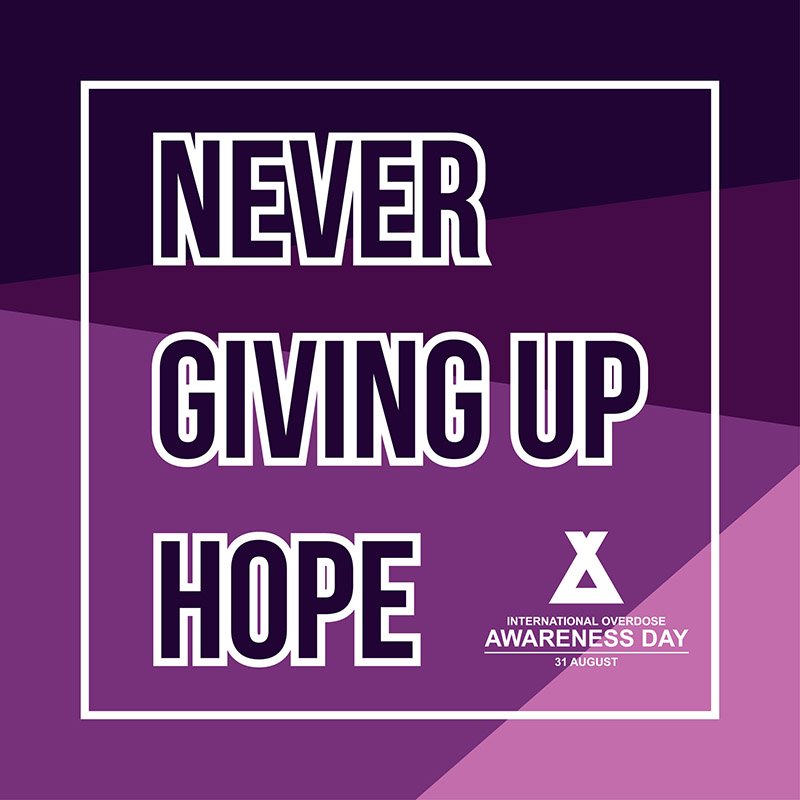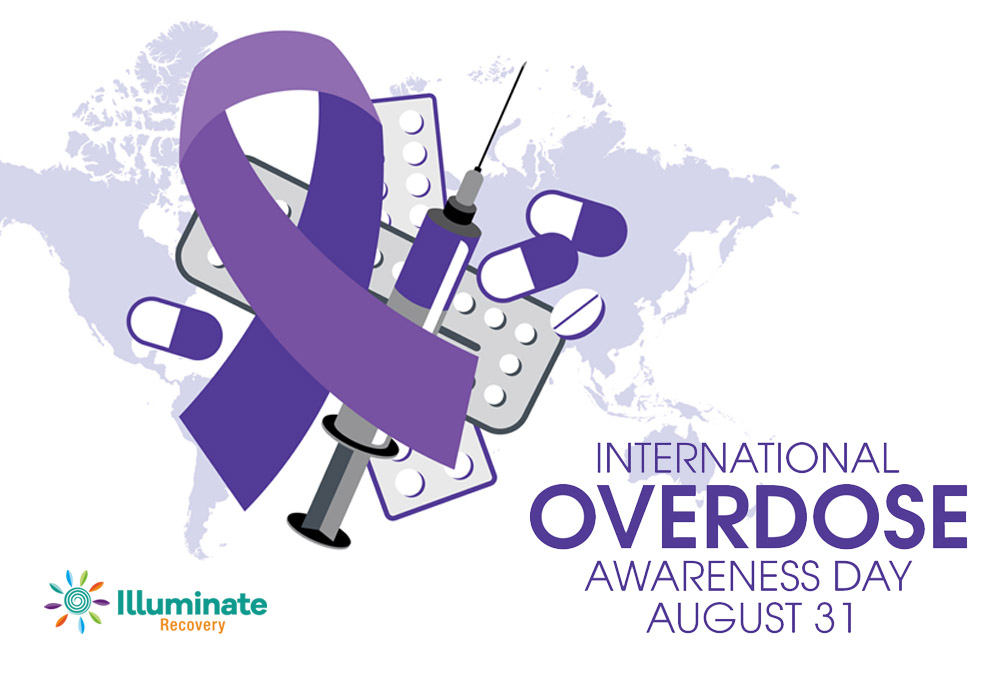According to the Arizona Department of Health Services, more than five people die every day from opioid overdoses in Arizona.[1]ADHS (2022). Opioid Prevention. Arizona Department of Health Services Resource. Retrieved June 17, 2022, from https://www.azdhs.gov/ This means we lose over 100 people every week that could be saved with better opioid overdose prevention strategy techniques. It is beneficial to learn what opioids are, how the crisis started, and what can be done to prevent losing another person to these addictive drugs.
What Are Opioids?
Opioids are a class of drugs that are typically used to reduce pain. Opioids can be commonly prescribed by doctors to treat moderate to severe pain, typically following a surgery. Though prescribed by a doctor, opioids still have serious risks and side effects. Opioids are highly addictive, even when taken responsibly. Due to the ever-increasing abuse numbers, many doctors are more cautious when it comes to prescribing and monitoring opioid use, but there is still more work to be done. Common prescription opioids include OxyContin, Vicodin, methadone, and morphine.
Fentanyl is rapidly growing as the most dangerous opioid risk spreading across the nation, yet people are surprised to learn how little they know about fentanyl. A synthetic opioid, Fentanyl is a significantly more powerful pain reliever than its counterparts. It is often 50-100 times more powerful than other opioids and can easily result in death even in the smallest dose when abused. Fentanyl is commonly prescribed to treat severe pain, such as pain associated with advanced cancer. While fentanyl is much more carefully prescribed, the amount of illegally made and distributed fentanyl continues to be on the rise.
 In Arizona, we are seeing a steep increase in mortality rates associated with fentanyl use.[2]Shover, C. L., Falasinnu, T. O., Dwyer, C. L., Santos, N. B., Cunningham, N. J., Freedman, R. B. & Humphreys, K. (2020). Steep increases in fentanyl-related mortality west of the Mississippi … Continue reading This is largely due to fentanyl being used to lace other drugs, increasing the potency, which can prove fatal to many. Fentanyl is laced with a variety of common illegal drugs that are sold without regulation. This has contributed to a massive increase in overdoses and death. Many individuals have no clue that their drugs have been laced with a highly potent, highly dangerous opioid drug. This sudden crisis resulted in the availability and use of fentanyl test strips. These strips can be used to test drugs to ensure they have not been laced. While any type of drug use is dangerous, avoiding drugs laced with fentanyl can be the difference between life and death.
In Arizona, we are seeing a steep increase in mortality rates associated with fentanyl use.[2]Shover, C. L., Falasinnu, T. O., Dwyer, C. L., Santos, N. B., Cunningham, N. J., Freedman, R. B. & Humphreys, K. (2020). Steep increases in fentanyl-related mortality west of the Mississippi … Continue reading This is largely due to fentanyl being used to lace other drugs, increasing the potency, which can prove fatal to many. Fentanyl is laced with a variety of common illegal drugs that are sold without regulation. This has contributed to a massive increase in overdoses and death. Many individuals have no clue that their drugs have been laced with a highly potent, highly dangerous opioid drug. This sudden crisis resulted in the availability and use of fentanyl test strips. These strips can be used to test drugs to ensure they have not been laced. While any type of drug use is dangerous, avoiding drugs laced with fentanyl can be the difference between life and death.
Heroin is another opioid that is contributing to a large number of unnecessary deaths. It is an illegally created opioid that is powerfully addictive and results in tens of thousands of deaths annually.
The Opioid Crisis
The opioid crisis can be traced back as far as the 1990s.[3]DeWeerdt, S. (2019). Tracing the US opioid crisis to its roots. Nature, 573(7773), S10-S10. Accessed 6/17/2022 from … Continue reading This was when pharmaceutical companies made a large push to medical communities across the U.S. to trust opioids for treating a variety of medical concerns. The largest selling point was the reassurance that patients would not become addicted to this pain relief option. Healthcare providers, reassured by pharmaceutical companies, started to prescribe opioids at an increased rate. This quickly led to widespread misuse of prescription and non-prescription opioids before the realization of how addictive the medication could be was fully recognized.
The sudden spread of opioid use and addiction was overwhelming for many communities where crime and illegal use quickly grew. Opioid addiction would soon start to affect all different communities, regardless of age, economic status, and employment.
Addressing the Issue
There have been several different movements and policies created to try and address the growing opioid crisis. In 2017, the Department of Health and Human Services officially declared a public health emergency concerning the opioid issue. They also presented a five-point strategy to address and try to combat the growing crisis. These steps include:
- Step 1 – Improving accessibility to programs that aid in opioid treatment, prevention, recovery, and healthy pain management for those involved with opioids on any level.
- Step 2 – Actively improve the ability to report and collect data in real-time. This is designed to better monitor ongoing trends and outcomes associated with opioid use.
- Step 3 – Work to provide high-quality, long-lasting pain management options that can decrease the reliance on opioids for pain relief.
- Step 4 – Improve the availability and distribution of overdose-reversing medications in all areas, but especially those areas that have high opioid-related crimes and deaths.
- Step 5 – Encourage and support research that aids in better understanding addiction and overdose. Better understanding can then lead to more effective tools when it comes to interventions and decreasing potential harm associated with opioid use.
Factors in Opioid Misuse and Overdose

Several factors go into misuse and an increased risk of opioid overdose.5 Misuse can happen when there is a misunderstanding between patient and provider. This misunderstanding could relate to dosage, prescription strength, or how much of the prescription is made available to the patient. Misuse can also happen to individuals who tend to seek unauthorized self-medication strategies for pain, mood, or sleeping problems. This could be the use of alcohol or other non-prescribed medications to address issues not discussed with your medical provider.
Misuse and risk of overdose are also common for individuals who are seeking the euphoria or psychoactive reward that taking opioid medication can provide. Opioids activate the reward center of the brain. This releases endorphins which are the feel-good neurotransmitters. This provides a decreased experience of pain while boosting feelings of pleasure and well-being. This state is only temporary, which is why misuse can develop in the attempt to chase this rewarding feeling.
Opioids can also be misused by those seeking potential financial gain. Opioids are highly addictive, which means that addicted individuals are commonly willing to pay a significant amount to get their hands on prescription opioid medication.
These factors can include:
- Young age
- Lack of social support
- Previous addiction issues
- Personal history of substance abuse
- Family history of substance abuse
- Psychological stress
- Psychological trauma
- Psychological disease

The Importance of Opioid Overdose Prevention
In Arizona, opioid addiction affects individuals of nearly all ages. The age group most heavily impacted is those between the ages of 25-34, closely followed by those 35-44. These are individuals in the prime of their life who are risking their future with opioid use. Overdose prevention must be taken seriously to save lives.
Many who find themselves addicted to opioids would never have thought they would end up in that state. Opioid addiction can happen to anyone. There is a common misconception that drug misuse only happens in poorer, less fortunate communities. This couldn’t be further from the truth. Opioid addiction can affect anyone, from a young high school athlete, a blue-collar worker, or a stay-at-home mom recovering from surgery. Since addiction and the risk of overdose can happen to anyone, it is important to use preventive strategies when possible.
At-Home Opioid Overdose Prevention Strategy
If you are prescribed an opioid, it is your responsibility that you acquire the most effective, yet safe, pain management possible. This starts with working closely with your doctor. You should create a detailed plan on how you intend to manage your pain. You should discuss any concerns you have, as well as any side effects you have experienced in the past. You want to make the most informed decision possible when choosing to take a highly addictive medication. This should include discussing pain management alternatives with your health care provider.
Proper dosage is important when it comes to preventing opioid overdose. You should never take more than what is prescribed. It is vital to follow the detailed instructions provided on your prescription bottle. If you do notice any side effects, be sure to discuss them with your medical professional right away. They can help you address the issue and decide the best course of action. You should avoid taking opioids with alcohol or other medications. This can be dangerous and potentially life-threatening, especially when mixed with medications that can cause drowsiness. This includes benzodiazepines, muscle relaxants, and hypnotics. You should never share or sell your prescription medication, even with someone who claims they have safely taken it in the past.
Proper storage is also important to protect yourself and your family. Opioids should be stored somewhere that is out of reach for children, family members, friends, and other guests to your home. Misuse of prescription medication by teenagers and young adults is a serious problem.[5]Webster, Lynn R. MD Risk Factors for Opioid-Use Disorder and Overdose, Anesthesia & Analgesia: November 2017 – Volume 125 – Issue 5 – p 1741-1748 DOI: … Continue reading Teenagers often are initially introduced to prescription medication that is found in their home or a friend’s home. It can only take a few pills to create a serious opioid addiction for a member of your household. You should properly dispose of any leftover prescription medication safely. This can be through a community drug take-back program or your local pharmacy’s mail-back program.
Signs of an Impending Overdose

It is necessary to understand the different signs indicating that an individual may be experiencing an overdose. No matter how insignificant a symptom may seem, it is still vital to take it seriously. When a person experiences an opioid overdose, just having a few extra minutes can make a significant difference.
Signs include:
- Drowsiness
- Dizziness
- Slow or nonexistent breathing
- Low blood pressure
- Loss of consciousness
- Clammy or cold skin
- Limp body
- Blue lips and nails
If you notice any of these symptoms, call 911 immediately. If you are trained, and if it is available, Narcan is a drug that can be used in an emergency to reverse an overdose. If you are not trained, you should consider doing so. You could save a life when you least expect it. Narcan has been used to prevent fatal overdoses over 3,000 times throughout the state of Arizona this year alone.
Consider Seeking Opioid Treatment
A vital way to prevent opioid overdose is to seek help when you realize there is a problem. There are several groups on social media that are designed to help partner mentors with individuals struggling with addiction. There are also therapy programs, outpatient programs, and rehabilitation centers that can help an individual safely detox from opioid use. These treatment options will help individuals find other ways to manage their pain and deal with the toll that addiction may have taken on their mental health, physical health, and relationships with others.
The opioid crisis continues to affect individuals in Arizona and across the country. Awareness, education, and support are great areas to start when it comes to combating the misuse of this highly addictive drug. If you or someone you love is struggling, the professionals at Illuminate Recovery can help. Contact us to learn more.

Having been on both sides of active addition, both the person using, and the person affected by a loved one using drugs and alcohol, Lucas has been involved in recovery since 2009. He has been working in the treatment industry since 2013. Using his personal experience and wealth of knowledge learned from professional development and immersion in the recovery field, he has spoken with thousands of families and helped hundreds of people attain long-term sobriety. In 2020, the opportunity presented to join in and start Illuminate Recovery. Understanding the importance of personalized treatment plans and the complex nature between substance abuse and co-occurring disorders, has helped Illuminate Recovery build a strong curriculum and a phenomenal staff. Illuminate Recovery now has a medical doctor who is board certified in addiction medicine and a psychiatric medical doctor who works side by side with independently licensed therapists to provide compassionate and effective treatment.
Sources:
| ↑1 | ADHS (2022). Opioid Prevention. Arizona Department of Health Services Resource. Retrieved June 17, 2022, from https://www.azdhs.gov/ |
|---|---|
| ↑2 | Shover, C. L., Falasinnu, T. O., Dwyer, C. L., Santos, N. B., Cunningham, N. J., Freedman, R. B. & Humphreys, K. (2020). Steep increases in fentanyl-related mortality west of the Mississippi River: recent evidence from the county and state surveillance. Drug and alcohol dependence, 216, 108314. https://doi.org/10.1016/j.drugalcdep.2020.108314 |
| ↑3 | DeWeerdt, S. (2019). Tracing the US opioid crisis to its roots. Nature, 573(7773), S10-S10. Accessed 6/17/2022 from https://link.gale.com/apps/doc/A602150576/AONE?u=anon~67189a68&sid=googleScholar&xid=26518f90 |
| ↑4 | Kroenke, K., Alford, D. P., Argoff, C., Canlas, B., Covington, E., Frank, J. W. & Sullivan, M. (2019). Challenges with implementing the centers for disease control and prevention opioid guideline: a consensus panel report. Pain Medicine, 20(4), 724-735.https://doi.org/10.1093/pm/pny307 |
| ↑5 | Webster, Lynn R. MD Risk Factors for Opioid-Use Disorder and Overdose, Anesthesia & Analgesia: November 2017 – Volume 125 – Issue 5 – p 1741-1748 DOI: 10.1213/ANE.0000000000002496. Accessed 6/17/2022 from https://journals.lww.com/anesthesia-analgesia/fulltext/2017/11000/risk_factors_for_opioid_use_disorder_and_overdose.41.aspx |

